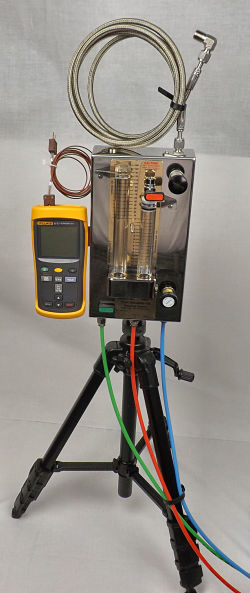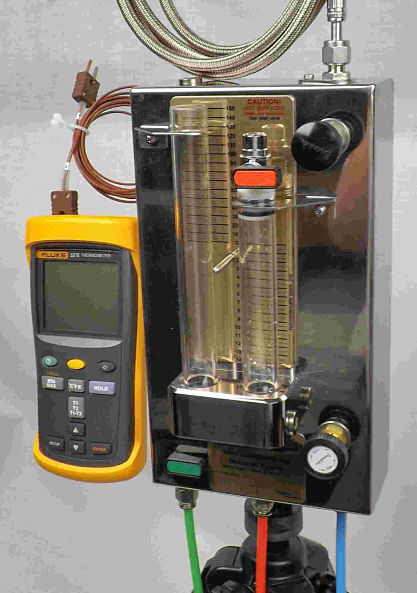 |
 |
Instructional Videos:
| NCG VM18 Water Siphon Method - BSP Connection | NCG VM18 Water Supply Method - BSP Connection | |
| NCG VM18 Water Siphon Method - Triclamp Connection | NCG VM18 Water Supply Method - Triclamp Connection |
Purpose of the test:
To demonstrate that the attainment of sterilization conditions in all parts of a sterilizer load (particularly of porous load items) is not impaired by the presence of non-condensable gases.
Method employed:
The measurement of non-condensable gases is made by cooling a steam sample with a condenser, using water siphoned or pumped from a tank at 200ml per minute. The minimum requirements are: a one metre head of water and its temperature below 28oC. A pump (available) or pressurised water supply is not essential.
When the sampled steam is condensed any non-condensable gases present are released and separated from the cooled condensate into two sight glass columns. The gas and steam condensate volumes are read directly from the sight glasses. The temperature of the condensate is maintained above 80oC by controlling the steam flow through the inlet needle valve while measuring the condensate temperature from a thermocouple probe on the outlet of the condenser.
To carry out repeated tests a return to the 'zero' position is made by opening the condensate drain and gas bleed valves. The valves are then closed when a new sample is required. Volumes up to 10ml gas and 200ml condensate are possible for each sample.
The non-condensable gas test is considered to be acceptable for sterilization purposes on clinical sterilizers if the percentage of gas to condensate is less than 3.5%.

